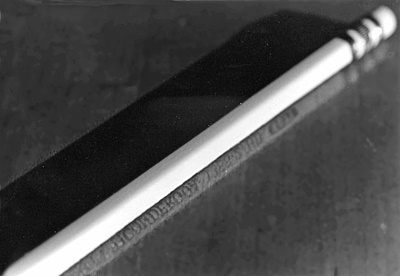All Nonfiction
- Bullying
- Books
- Academic
- Author Interviews
- Celebrity interviews
- College Articles
- College Essays
- Educator of the Year
- Heroes
- Interviews
- Memoir
- Personal Experience
- Sports
- Travel & Culture
All Opinions
- Bullying
- Current Events / Politics
- Discrimination
- Drugs / Alcohol / Smoking
- Entertainment / Celebrities
- Environment
- Love / Relationships
- Movies / Music / TV
- Pop Culture / Trends
- School / College
- Social Issues / Civics
- Spirituality / Religion
- Sports / Hobbies
All Hot Topics
- Bullying
- Community Service
- Environment
- Health
- Letters to the Editor
- Pride & Prejudice
- What Matters
- Back
Summer Guide
- Program Links
- Program Reviews
- Back
College Guide
- College Links
- College Reviews
- College Essays
- College Articles
- Back
Plastics: From Pencil to Paper
It slides, emitting a soft purr as it crosses diagonally over the paper. She drags it, creating swirls, loops, and shapes in the margin of the loose-leaf; the sheet is reinforced with a plastic coating around the triple hole punch. The slim, plastic, mechanical pencil is gripped tightly. She holds the pencil, and a calloused thumb forms around its cylindrical shape. It aids her imagination, creating textures, depth, and dimensional designs. Her hand drifts from neat penmanship to lavish sketches.
“Pay attention,” says the instructor. The voice drips with professional liability.
No matter, the girl–the woman–continues. She keeps creating her own masterpiece. The innocent shapes aid her focus.
According to John Cloud of TIME Magazine, “Doodling forces your brain to expend just enough energy to stop it from daydreaming but not so much that you don't pay attention” (TIME, 2009). The woman knows this, for her mother told her what her mechanical pencils are capable of. They are crafted of plastics.
The daughter witnesses the wonders of plastic. She knows her plastic pencil is a lifebuoy.
Her calloused thumb continues to hold it tight and close; it keeps her from drowning in the dark abyss of a daydream: it keeps her head above water, it keeps her lucid, and it keeps her from the carnivorous dilemmas and dangerous creatures below.
And at this point, the instructor caves. The lady waves an imaginable white flag above her head, spreading the toxic smell of well-used hairspray. She will not waste her voice arguing with a misbehaving woman and her small pieces of plastic.
The mechanical pencil is of superb craftsmanship. It is forged with ergonomic intent. Perhaps it started off as an idea–a familiar sketch on loose-leaf paper. Perhaps drawn with its predecessor, a wooden stick of lead and slivers. After all, plastic helps provide an advanced alternative.
The mechanical pencil gives its owner an array of graphite grades; it is consistently sharp and remarkably recyclable. Even the woman’s pencil has a specialized eraser stirring with rubber and plastic and a barrel filled with thin tubes of sharp graphite.
Pencil parts are born disconnected–an assortment of plastic, rubber, and screw-grooved tips. Mechanical pencils are made of plastics derived from natural resources and gas, carbon-rich, raw oil. And the rubber of the Pará rubber tree. Minerals, coal, natural gas, rubber…they are plastic’s meaty organs. They bleed into a fat mixture of recyclable material. And even if they fail, they return. For now, the woman’s plastic may be in the form of a well-chambered pencil, but it is destined to be much more.
Plastic lives within her pencil; it swims in the eraser, mingling with rubber and other products. It corrects her mistakes, but she learns from them as she takes notes and later drifts into the margin. She stares through the lenses of a plastic, black frame; her glasses are thick with knowledge. And the woman is watching a plastic pencil cross diagonally over the paper, creating swirls, loops, and shapes. She thanks the plastic for the gradient artwork in the margin of her loose-leaf paper. It’s no wonder we use plastics; they are a key part in innovation, efficiency, and the future.
References
Cloud, J. (2009). Study: Doodling helps you pay attention.

Similar Articles
JOIN THE DISCUSSION
This article has 0 comments.

This piece was written for the Science of Plastics Engineers. Typically, there are many negatives to plastics. But I decided on taking a creative route that revolves around the plastics within a mechanical pencil.